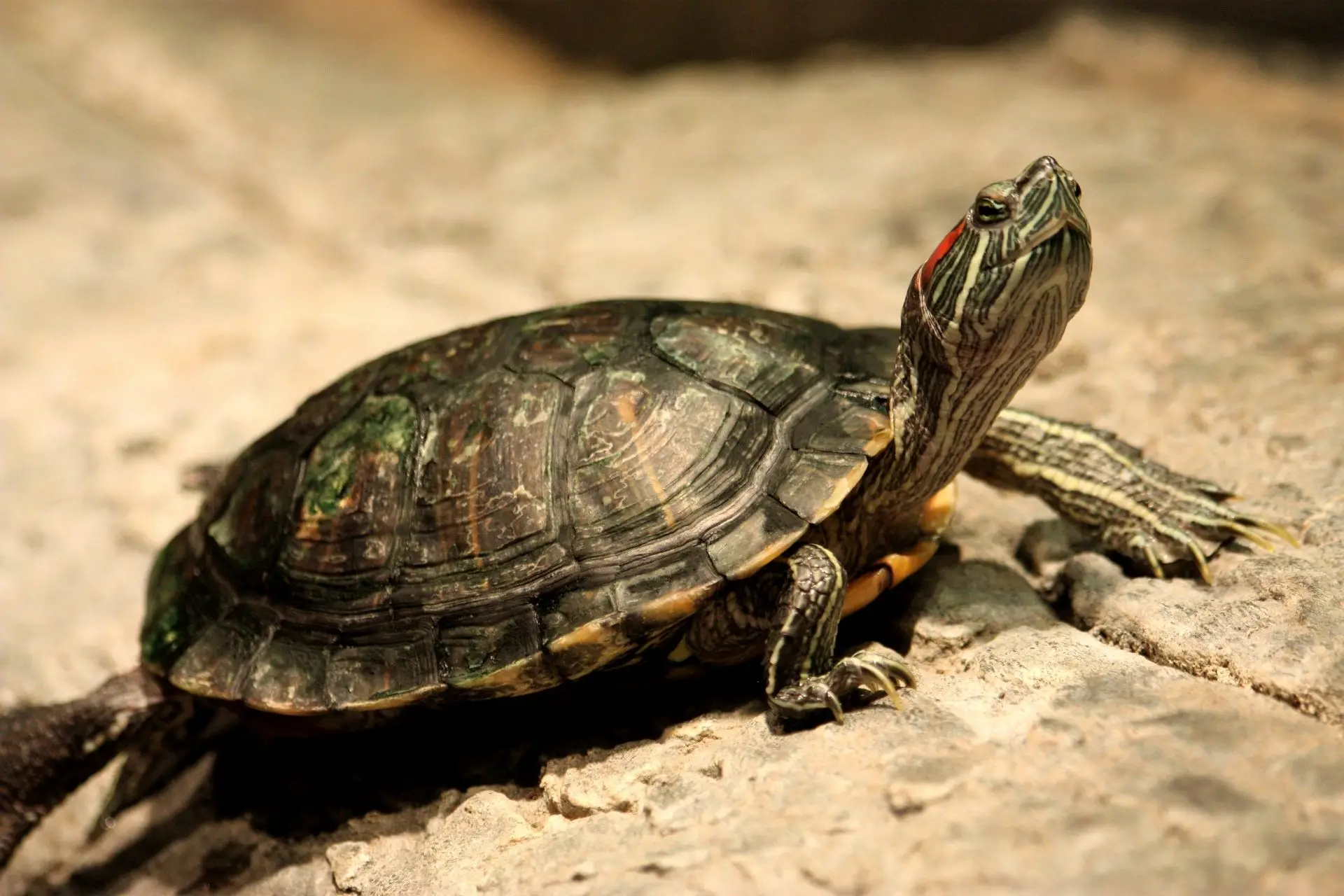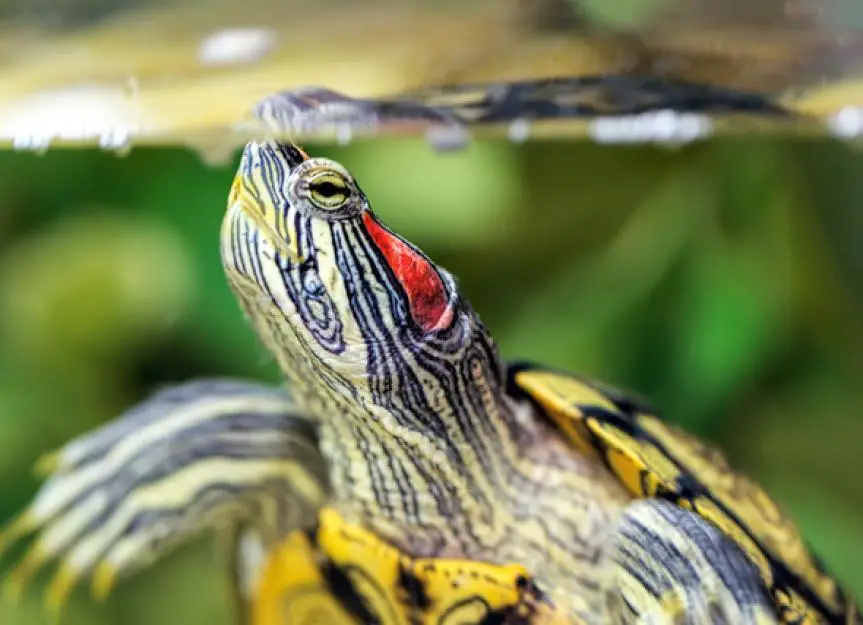According to the Oregon Department of Fish and Wildlife, they face competition with native turtles for food, habitat for nesting and sunbathing, and hiding spots. Red-eared sliders carry illnesses and parasites that native turtles are not immune to.
Ecological Impacts
Red-eared sliders can spread infections like Salmonella, respiratory illnesses, or ranavirus. They compete with local turtles for food and habitat. Wildlife, including frogs, reptiles, fish, and native turtles to Ontario, such as the snapping turtle, are at risk from ranaviruses. Red-eared sliders are bigger than native species like painted turtles (Chrysemys picta bellii), who compete with them for basking spots on rocks and logs. Native turtles require this access to warm sunlight to sustain a healthy metabolism and digestion. The threat posed by non-native rivals is of utmost importance because the Canadian government has listed 7 of the 8 native turtle species as being in danger.
The red-eared slider is thought to be endangering several native species in Canada. Examples include the Western painted turtle (COSEWIC, 2006), which is listed as threatened by the Committee on the Status of Endangered Wildlife in Canada, the Spiny Softshell (OMECP, 2020b), the Spotted Turtle (OMECP, 2020c), and Blanding’s Turtle, which is listed as a threatened species by the same act (OMECP, 2020a). Native turtles already face several obstacles to survival, including habitat loss, road fatalities, and the threat of predators; the introduction of another species could make these already complex survival barriers even more difficult.
Economic and Social Impacts
Red-eared sliders raised in captivity are carriers of the pathogen Salmonella, which can be dangerous to humans. When handled by humans, their bodies are easily contaminated by the bacteria found in their excrement. At least one Salmonella incident in the US has been connected to contact with pet red-eared sliders.
Any invasive species can present communities with economic and social problems, such as increased management costs, infrastructure harm, or biological changes that make it harder to engage in leisure activities, to mention a few. Red-eared sliders are not well known for posing many risks outside of ecological impact, yet this disruption could nonetheless result in alterations to delicate systems and unanticipated consequences.
Why Are Red-Eared Sliders Considered Such a Dangerous Invasive Species?
Red-eared sliders are unquestionably adorable, but in many parts of the world, they are viewed as a serious threat rather than a pleasant pet
These turtles can destroy non-native habitats for a variety of reasons, including their absence of natural predators, prolonged lifespans, and capacity to outcompete other turtle species. All of these factors give them the ability to quickly take over new habitats and disturb the delicate balance of life that exists there.
These turtles can even hunt local fish species almost to extinction in some areas, including Bermuda. Because these fish prey on other fish and insects and become rapidly out of control when their natural predators are absent, this can significantly affect the surrounding environment.
However, not all of the destruction caused by these turtles is their responsibility. When turtles raised in captivity for use as pets escape or are returned into the wild, the medicines they received during their upbringing may interfere with the normal bacterial distribution in those waterways, with potentially disastrous repercussions.
These turtles are administered antibiotics because they have a lengthy history of contaminating food with Salmonella. Even if the drugs don’t seep into the turtles’ new habitats, they might transport enormous colonies of dangerous bacteria that can be fatal to creatures that haven’t adapted to the threat. The fact that many of these bacterial outbreaks are developing increased antibiotic resistance is much worse. This is because of how the turtles were treated when in captivity.

Are Red-Eared Sliders Dangerous to Humans?
The fact that these animals are so often kept as pets should be an indication that no, they’re not dangerous to humans — at least not through direct, traditional methods. That said, they do pack a nasty bite, so keep your fingers clear of their little beaks. However, there are certain ways in which they pose a massive risk to humanity, albeit indirectly. The first is the fact that when they enter a new habitat, some of the species that they crowd out of the ecosystem are those that perform jobs like mosquito control, for example (which red-eared sliders do not help with). Once these animals are gone or severely diminished, mosquito populations can explode, and that can lead to a corresponding explosion of disease in humans. They also offer a significant concern due to the Salmonella they frequently carry. They can make you sick, and attempts to cure them have resulted in the emergence of antibiotic-resistant forms of the bacteria, which is terrible news for you if you do become ill.
Conclusion
Red-eared sliders make fantastic small friends because they don’t require walks, consume little, and don’t mind if you talk to yourself aloud. However, it’s crucial that these animals remain as pets because if they stray into unfamiliar areas, they could wreck ecological order.
You won’t likely regret it if you decide to add one of these little reptiles to your menagerie. Just be careful to keep them within your home; otherwise, you can cause more environmental damage than you ever imagined.
The good news is that it’s simple to catch them if they manage to escape.








